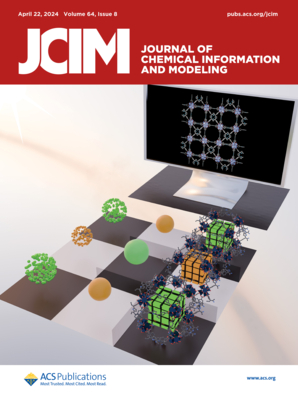通过非对称对比多模态学习增强化学理解,促进药物发现。
IF 5.3
2区 化学
Q1 CHEMISTRY, MEDICINAL
引用次数: 0
摘要
多模态深度学习的多功能性为推进科学研究和实际应用带来了巨大的希望。随着这一领域的不断发展,跨模态分析的集体力量有望推动变革性创新,开辟化学理解和药物发现的新领域。因此,我们引入了非对称对比多模态学习(ACML),这是一种专门设计的方法,用于增强分子理解并加速药物发现的进展。ACML利用有效的非对称对比学习的力量,无缝地将信息从各种化学形态转移到分子图表示。通过将预训练的化学单峰编码器与5层浅设计图编码器相结合,ACML促进了来自不同模态的协调化学语义的同化,从而通过高效的训练实现了全面的表征学习。我们通过大规模的跨模态检索和异构体识别任务证明了该框架的有效性。此外,ACML通过揭示图形表示中的化学语义增强了可解释性,并增强了图形神经网络的表达能力,这一点得到了MoleculeNet和Therapeutics Data Commons (TDC)在分子特性预测任务中的改进性能的证明。最终,ACML证明了其革命性分子表征学习的潜力,提供了对不同模式的化学语义的更深入的见解,并为化学研究和药物发现的突破性进展铺平了道路。本文章由计算机程序翻译,如有差异,请以英文原文为准。
Advancing Drug Discovery with Enhanced Chemical Understanding via Asymmetric Contrastive Multimodal Learning.
The versatility of multimodal deep learning holds tremendous promise for advancing scientific research and practical applications. As this field continues to evolve, the collective power of cross-modal analysis promises to drive transformative innovations, opening new frontiers in chemical understanding and drug discovery. Hence, we introduce asymmetric contrastive multimodal learning (ACML), a specifically designed approach to enhance molecular understanding and accelerate advancements in drug discovery. ACML harnesses the power of effective asymmetric contrastive learning to seamlessly transfer information from various chemical modalities to molecular graph representations. By combining pretrained chemical unimodal encoders and a shallow-designed graph encoder with 5 layers, ACML facilitates the assimilation of coordinated chemical semantics from different modalities, leading to comprehensive representation learning with efficient training. We demonstrate the effectiveness of this framework through large-scale cross-modality retrieval and isomer discrimination tasks. Additionally, ACML enhances interpretability by revealing chemical semantics in graph presentations and bolsters the expressive power of graph neural networks, as evidenced by improved performance in molecular property prediction tasks from MoleculeNet and Therapeutics Data Commons (TDC). Ultimately, ACML exemplifies its potential to revolutionize molecular representational learning, offering deeper insights into the chemical semantics of diverse modalities and paving the way for groundbreaking advancements in chemical research and drug discovery.
求助全文
通过发布文献求助,成功后即可免费获取论文全文。
去求助
来源期刊
CiteScore
9.80
自引率
10.70%
发文量
529
审稿时长
1.4 months
期刊介绍:
The Journal of Chemical Information and Modeling publishes papers reporting new methodology and/or important applications in the fields of chemical informatics and molecular modeling. Specific topics include the representation and computer-based searching of chemical databases, molecular modeling, computer-aided molecular design of new materials, catalysts, or ligands, development of new computational methods or efficient algorithms for chemical software, and biopharmaceutical chemistry including analyses of biological activity and other issues related to drug discovery.
Astute chemists, computer scientists, and information specialists look to this monthly’s insightful research studies, programming innovations, and software reviews to keep current with advances in this integral, multidisciplinary field.
As a subscriber you’ll stay abreast of database search systems, use of graph theory in chemical problems, substructure search systems, pattern recognition and clustering, analysis of chemical and physical data, molecular modeling, graphics and natural language interfaces, bibliometric and citation analysis, and synthesis design and reactions databases.

 求助内容:
求助内容: 应助结果提醒方式:
应助结果提醒方式:


